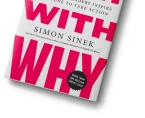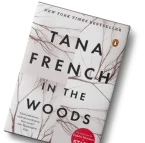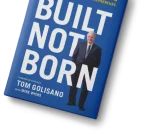
Short poems may be brief, but they can carry incredible weight. In just a few lines, a poem can transport us into a vivid moment, evoke powerful emotion, or capture a truth we didn’t realize we needed. Unlike longer forms of poetry or prose, short poems rely on precision, rhythm, and clarity to leave a lasting impact. If you’re new to poetry or refining your craft, learning to write short poems helps you become a more focused, expressive writer.
In this guide, we’ll explore different types of short poems, provide inspiring examples, and offer simple, actionable advice to help you write your own. With practice and creativity, you’ll see how a handful of lines can hold an entire world.
Why Short Poems Matter in 2025
Short poems have unique strengths:
- Immediate impact
No fluff—every word counts. This makes them emotionally punchy and memorable. - Creative agility
Perfect for writing anytime—waiting for a bus or sipping coffee. - Craft skill building
Compressing big ideas into tight lines strengthens word choice and imagery. - Accessible to readers
Easy to share and enjoy, these poems work well on Instagram, greeting cards, or workshops.
Once you learn to write short, well-crafted poems, you’ll find your writing in any form becomes sharper and more emotional.
Write Short Poems That Speak Loud
We help poets shape short verses into powerful, polished collections ready for publication.
Turn Poems Into BooksShort Poem Formats & Examples
Here are some common short-poem styles with examples you can read and learn from:
1. Haiku (5-7-5 syllables, traditional Japanese)
Example:
morning frost
iced petals glisten—
winter’s farewell
Why it works:
- Simple structure teaches brevity
- Sense of place or moment invites reflection
2. Tanka (5-7-5-7-7 syllables)
Example:
long shadows stretch
across the faded pavement
echoing footsteps
of a child I once carried
home in his autumn coat
Why tanka matters:
- Adds two lines of reflection
- Allows deeper emotion within a short verse
3. Couplet (two rhymed lines)
Example:
In moonlit hush a single owl sings,
Night blossoms wide on silent wings.
Why use couplets?
- Ideal for quick rhymes
- Good for thematic summarization
4. Monostich (single line poem)
Example:
A single snowflake lands—my winter begins.
Why go single-line?
- Captures a moment like a snapshot
- Encourages vivid focus and economy
5. Micro-poem (2–6 lines, free verse)
Example:
Blue windowpane
trapped sunlight loosens
its grip on morning.
Why free verse micro-poems?
- Great first step into poetic thinking
- No strict form, more freedom
Make Every Line Count
At Estorytellers, we help poets craft short, meaningful poems that leave a lasting impression.
Publish Your PoetryHow to Write a Short Poem
Follow these steps to create your own short poem:
Step 1: Choose Your Form
Pick a structure that suits your mood:
- Haiku for nature or seasons
- Couplet for a musical rhyme
- Micro-poem when you want freedom
Step 2: Identify Your Subject or Moment
Short poems shine when they focus on one image, emotion, or memory:
- A sunset, rain on a window, a quiet goodbye
Step 3: Use Concrete Details
Details ground your poem:
- Color: “crimson leaf”
- Sound: “soft crackle”
- Texture: “frosted glass”
Step 4: Start Writing
- For haiku: five syllables, seven, five.
- For a couplet: two lines, rhymed or unrhymed.
- For micro-poems: 2–6 lines of free verse.
Step 5: Revise with Purpose
- Cut unnecessary words—every word must earn its place.
- Show, don’t tell—use imagery, not explanation.
- Read aloud to catch rhythm or awkward language.
- Rhyme pairs in couplets: try A/A, A/B, or none.
Short Poems. Big Impact.
We guide you in writing and publishing compact poems that hit hard and speak deep.
Publish Your Poem With UsMore Short Poem Examples with Breakdown
Haiku Example
old pond
frog jumps in—
sound of water
Matsuo Bashō’s famous haiku:
- Presents a scene (“old pond”)
- Action (“frog jumps in”)
- Reaction (“sound of water”)
Each line in just 5 / 7 / 5 syllables.
Tanka Example
veiled morning
behind gray glass—
damp earth exhales
longing for a sunlit path
warmed by a distant rose
First three lines set image; last two add reflection and mood.
Mini Free Verse Example
starless night,
I trace the map
of yesterday’s regrets
on empty pavement.
Each line adds image, emotion, progression, and a strong final impression.
Tips for Strong Short-Poem Writing
- Capture a moment
Short poetry works best with a single clear focus. - Choose precise words
Prefer “ember” over “light,” “shudder” over “shake.” - Use sensory language
Sight, sound, touch engage readers instantly. - Embrace silence
White space and line breaks add meaning and emphasis. - Try contrast
Pair light with dark, stillness with movement to deepen impact. - Avoid clichés
Make metaphors and images fresh. - Practice daily
A 5-minute poem each day builds your poetic muscles fast. - Share your work
Feedback helps highlight which lines resonate.
Creativity Exercises
- Haiku prompt
Write a haiku about rain, winter, or morning. - Single line poem
Capture your current mood in one line. - Picture inspiration
Look at a photo and write a 4-line free-verse scene. - Omit the usual
Write a poem about youth—without using the words youth, child, or young.
Editing Checklist
Before finalizing your poem, check:
- Is every word necessary?
- Am I using concrete images?
- Does my final line land with impact?
- Is rhythm or sound distracting?
(Read it aloud.) - Have I unintentionally used clichés?
Why Estorytellers Can Help With Poem Writing
Writing short poems is fun, but polishing them takes craft. Estorytellers offers:
- Personal feedback on imagery, rhythm, and literary device
- Rewrite suggestions to sharpen impact
- Guided writing prompts tailored to your style
Let your short poem shine and reach readers—not just in your notebook, but on a blog, social post, or printed chapbook.
Ready to Write?
Take five minutes right now — pick a prompt or moment, choose a form, and write. Then read it, polish it, and share it.
If you’d like extra support on imagery, emotional depth, or structure, Estorytellers is here to help every step of the way with thoughtful feedback, workshops, and creative coaching.
Final Words
Writing short poems is a meaningful way to develop your voice and sharpen your writing. By working with just a few lines, you learn how to choose the right word, build vivid imagery, and focus on the emotion or idea that matters most. From haiku to free verse, each format offers unique creative possibilities, and the beauty of short poem writing lies in its flexibility. Whether you’re writing for yourself, for readers online, or for publication, these compact poems are a powerful tool.
If you’re ready to take your short poems further, Estorytellers can help with personalized feedback, editorial guidance, and creative writing services that help your words find the audience they deserve. So take the leap—your next poem could be just three lines away.






























